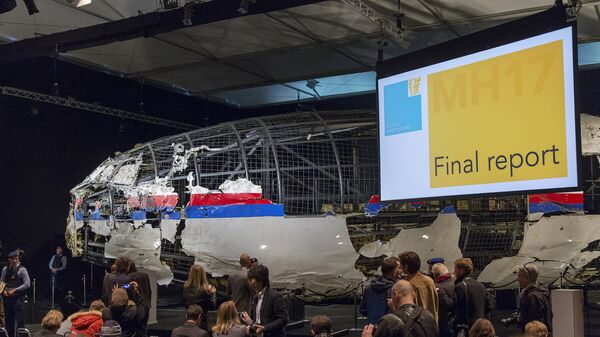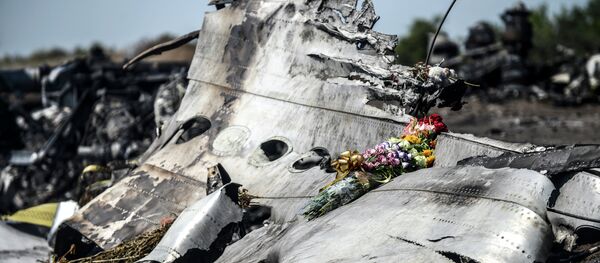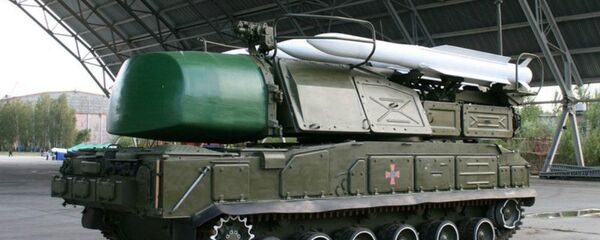The dual reports released by Buk manufacturer Almaz-Antey using both analytical models and a real-world experiment, and the Dutch Safety Board using international sources showed major discrepancies between the two models.
Russia has appealed to the UN's International Civil Aviation Organization (ICAO) over irregularities in the Dutch investigation, asking for a more clear and transparent investigation than the one presented in the report.
1. Launch Sites
The Almaz-Antey presentation presented Zaroschenskoye as the launch site while the DSB went with the theory that the missile was launched from an area southeast of Snezhnoye.
Almaz-Antey decided to go with the DSB version for its experiment, simulating the missile trajectory. However, the results showed a major discrepancy with the DSB theory, showing that either the missile was not fired from Snezhnoye or the missile used was not the 9M38M1.
According to data from a contract bid to modernize Ukraine's surface-to-air missile systems, which Almaz-Antey participated in, Ukraine had 991 9M38M1 missiles and 502 9M38 missiles as of 2005.
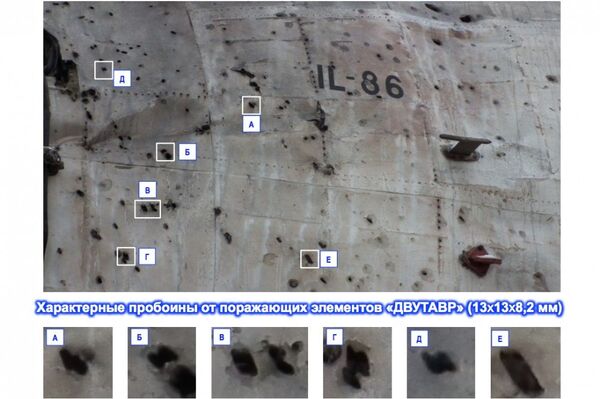
Whether the missile hit the plane from the side or from the front is another issue, as the Almaz-Antey experiment using the DSB theory showed.
A major evidence point for this is the lack of damage to the plane's left engine in the experiment using the Dutch model. However, engine damage occurred on the MH17. Almaz-Antey also conducted an experiment using its own model of the missile trajectory (Zaroschenskoye), in which the engine target was hit by missile shrapnel.
3. Shrapnel Cloud
The shrapnel cloud and damage to the plane's fuselage created more questions for the difference between the two reports.
The Almaz-Antey experiment showed that if the 9N314M warhead with bowtie-shaped fragments was indeed used, it would have left clear bowtie-shaped marks on the fuselage. However, no such marks appeared on the MH17 fuselage cabin.
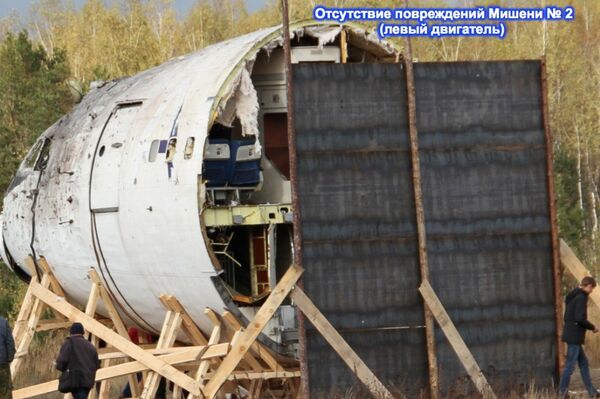
4. Missile Type
The DSB report is more vague about the type of missile used, using Ukrainian information on missile and warhead specifications rather than data from the manufacturer.
This is detailed in Appendix V of the DSB report, detailing the Russian objections to the conclusion that the warhead used was a 9N314M. The Almaz-Antey experiment also showed this.
5. 'Ukrainian Experts'
The DSB report also heavily relies on Ukrainian experts for identifying the missile used, although Ukraine claims to not possess any Buk systems (it renovated one less than two months before the MH17 crash). Citing exclusively the Kiev Research Institute for Forensic Expertise of the Ministry of Justice rather than the manufacturer, Almaz-Antey, the report overruled Russian objections regarding the missile used, reaching a vaguer conclusion than it would have otherwise.
The Ukrainian expertise also narrowed down the launch site to the area of a single field, something neither the Dutch projections of a possible missile path nor the Almaz-Antey simulation were able to do.
Most objections to the investigation are detailed in appendices V and W of the final report. While most countries' objections are of a political manner (the US for some reason wanted to get rid of mentions of Itavia flight 870, a plane ruled brought down by a missile in what was apparently a botched 1980 Gadhafi assassination attempt), Russia's objections are mostly based on Almaz-Antey's findings.
In the suggested changes, the Russian Federal Air Transport Agency provided evidence of issues with the conclusions, including the projectiles' weight, speed and angles in the simulations, which were largely ignored by the Dutch report.

